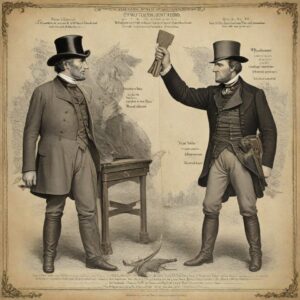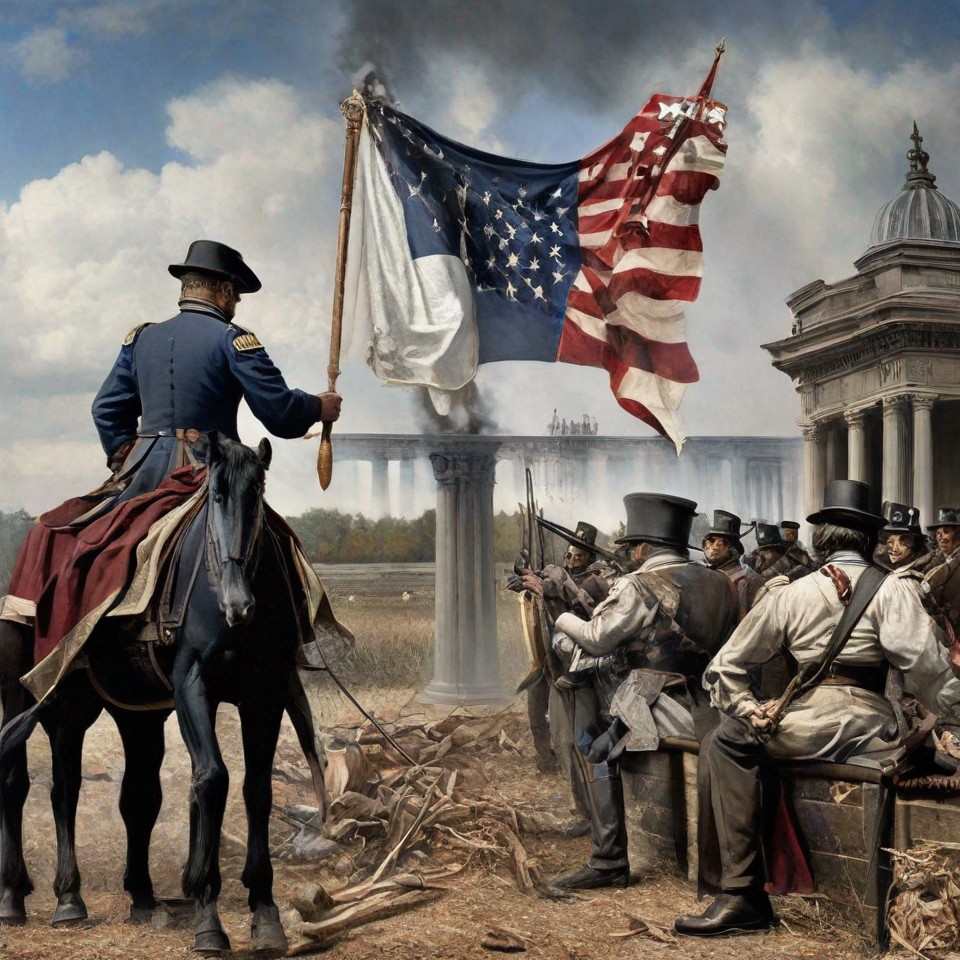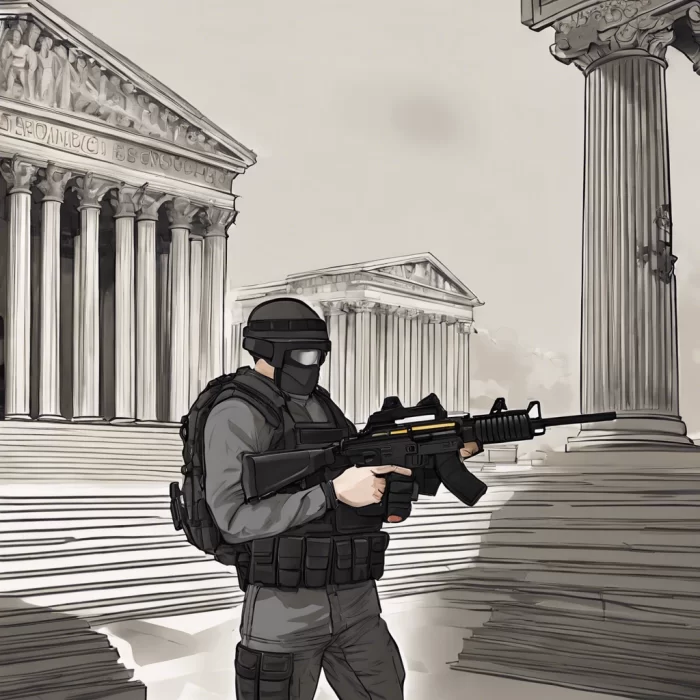The American Civil War, which erupted in 1861, is often viewed through the lens of the moral and economic conflicts surrounding slavery. However, at its core, the war can also be seen as a profound legal dispute over the fundamental question of whether states had the right to secede from the Union. This legal conflict, set against the backdrop of slavery, drove the nation into a brutal and transformative war.
The Constitutional Silence on Secession
The United States Constitution, drafted in 1787, is notably silent on the issue of secession. It outlines the process for admitting new states but does not address whether a state can unilaterally leave the Union. This omission left room for divergent interpretations. Proponents of secession argued that since the Constitution did not explicitly forbid it, states retained the right to withdraw based on the principle of state sovereignty. Opponents, however, contended that the Constitution created a perpetual union, with the federal government holding supreme authority.
Precedent and the Declaration of Independence
Secessionist sentiment drew philosophical support from the Declaration of Independence, which asserts the right of a people to “alter or to abolish” a government that becomes destructive of their fundamental rights. Southern states, perceiving threats to their economic interests and social order due to the anti-slavery stance of the Republican Party, invoked this principle to justify their departure from the Union.
Lincoln’s Legal Stance
Abraham Lincoln’s election in 1860, without appearing on the ballot in most Southern states, intensified sectional tensions. Despite his moderate position on slavery—Lincoln repeatedly stated that he had no intention of interfering with slavery where it already existed—Southern states viewed his presidency as a direct threat. They feared restrictions on slavery’s expansion and potential future efforts to abolish it entirely

Lincoln, a lawyer by profession, firmly believed in the illegality of secession. He viewed the Union as an indissoluble entity, created by the Constitution and perpetuated by the mutual consent of the states. Lincoln argued that no state could unilaterally secede without violating the Constitution and undermining the rule of law. His inaugural address made it clear that he considered acts of secession to be insurrectionary and that he intended to preserve the Union at all costs.
No Judicial Challenges to Secession
Interestingly, there were no significant attempts to challenge the Southern states’ secession in the courts at the prior to the start of the war. One significant reason the government may have hesitated to challenge secession in court was the composition and ideological leanings of the Supreme Court at the time. Chief Justice Roger B. Taney, a Maryland native and Southern sympathizer, presided over the Court. Taney’s most infamous decision, the Dred Scott v. Sandford ruling in 1857, had declared that African Americans could not be citizens and that Congress had no authority to prohibit slavery in the territories.
Given Chief Justice Taney’s pro-slavery views and the presence of other justices who were sympathetic to the South, the Lincoln administration might have doubted that the Court would rule against secessionist states. A judicial challenge to secession could have resulted in a ruling that legitimized the Confederate states’ claims to independence, thereby undermining the Union’s efforts to preserve itself. The political climate was intensely polarized, and any unfavorable ruling from a Taney-led Court could have further inflamed tensions and possibly even galvanized more states to join the Confederacy.
Instead of pursuing a legal battle in a potentially hostile Supreme Court, Lincoln chose a more direct approach to address secession: the use of executive and military power. By calling for volunteers to suppress the rebellion and preserving federal authority over Union-held forts like Fort Sumter, Lincoln chose to maintain the Union through military might rather than risk a damaging judicial precedent.
Democratic Processes in Secession
The decision to secede and join the Confederacy was made through various democratic processes within the individual states, though the legitimacy and inclusiveness of these processes can be debated.
- State Conventions: Many Southern states held special conventions to debate and vote on the issue of secession. Delegates to these conventions were elected by the people, and the conventions were meant to represent the will of the state’s residents. For example, South Carolina, the first state to secede, held a convention where the delegates voted unanimously to leave the Union.
- Legislative Actions: In some states, the decision to secede was made by the state legislature. The legislatures voted on secession ordinances, which were then enacted as state law.
- Referendums: In a few instances, states held referendums to allow the broader populace to vote directly on the issue of secession. Texas, for instance, held a referendum where a majority of voters supported secession.
The process of joining the Confederacy also followed democratic principles to some extent. States that seceded sent representatives to Montgomery, Alabama, where they participated in the formation of the Confederate government. These representatives helped draft the Confederate Constitution and elected Jefferson Davis as the President of the Confederacy.
In short, the Confederate States believed they had used democratic procedures to exercise their right of self determination. Yet, they were never given a judicial hearing on their democratic claims.
The Attack on Fort Sumter
 The secession crisis reached a boiling point at Fort Sumter in April 1861, when Confederate forces fired upon the federal fort in Charleston Harbor. This marked the beginning of the Civil War, as President Lincoln called for 75,000 volunteers to suppress the rebellion, asserting the federal government’s right to maintain the Union and enforce its laws. Notably, the attack on Fort Sumter was not directly related to the issue of slavery; rather, it was about federal authority and the Union’s integrity.
The secession crisis reached a boiling point at Fort Sumter in April 1861, when Confederate forces fired upon the federal fort in Charleston Harbor. This marked the beginning of the Civil War, as President Lincoln called for 75,000 volunteers to suppress the rebellion, asserting the federal government’s right to maintain the Union and enforce its laws. Notably, the attack on Fort Sumter was not directly related to the issue of slavery; rather, it was about federal authority and the Union’s integrity.
Supreme Court Rulings and Post-War Clarifications
The composition of the Supreme Court underwent significant changes during Lincoln’s presidency, particularly due to the vacancies that arose. Over his term, Lincoln had the opportunity to appoint five justices, which dramatically altered the ideological balance of the Court. These justices were generally more sympathetic to the Union cause and less inclined to support Southern arguments regarding states’ rights and secession.
Lincoln’s appointments were instrumental in reshaping the judiciary to reflect the Union’s priorities during and after the Civil War. Each new justice brought a perspective that aligned more closely with Lincoln’s vision of a preserved and strengthened Union. For example, Salmon P. Chase, appointed as Chief Justice in 1864, was a staunch abolitionist and a key figure in the Republican Party. Under his leadership, the Court began to reflect more progressive and Unionist ideals.
The question of secession’s legality was definitively addressed after the war in the Supreme Court case Texas v. White (1869). The Lincoln Court ruled that secession was unconstitutional, affirming Lincoln’s stance that the Union was perpetual and indissoluble. Chief Justice Salmon P. Chase wrote that acts of secession were “absolutely null” and that states had no right to unilaterally withdraw from the Union
Conclusion
The Civil War, while driven by deep-seated issues surrounding slavery, was fundamentally a legal conflict over the nature of the Union and the rights of states within it. The lack of judicial and congressional negotiations, combined with the democratic processes used by the Southern states to secede, underscores the complexity and multifaceted nature of the secession crisis. The war settled the question of secession by force, but it also led to significant legal and constitutional developments that continue to shape the United States. Lincoln’s unwavering commitment to the Union and the subsequent judicial affirmation of his views underscore the Civil War as not only a battle over slavery but also a decisive legal struggle over a question not answered in the Constitution.


